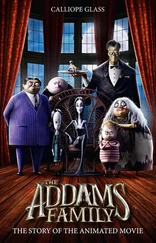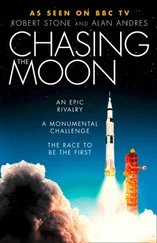Hendrik Loon - The Story of Mankind
Здесь есть возможность читать онлайн «Hendrik Loon - The Story of Mankind» весь текст электронной книги совершенно бесплатно (целиком полную версию без сокращений). В некоторых случаях можно слушать аудио, скачать через торрент в формате fb2 и присутствует краткое содержание. Год выпуска: 2000, Издательство: Electronic Text Center. University of Virginia Library., Жанр: Старинная литература, на английском языке. Описание произведения, (предисловие) а так же отзывы посетителей доступны на портале библиотеки ЛибКат.
- Название:The Story of Mankind
- Автор:
- Издательство:Electronic Text Center. University of Virginia Library.
- Жанр:
- Год:2000
- ISBN:нет данных
- Рейтинг книги:3 / 5. Голосов: 1
-
Избранное:Добавить в избранное
- Отзывы:
-
Ваша оценка:
- 60
- 1
- 2
- 3
- 4
- 5
The Story of Mankind: краткое содержание, описание и аннотация
Предлагаем к чтению аннотацию, описание, краткое содержание или предисловие (зависит от того, что написал сам автор книги «The Story of Mankind»). Если вы не нашли необходимую информацию о книге — напишите в комментариях, мы постараемся отыскать её.
The Story of Mankind — читать онлайн бесплатно полную книгу (весь текст) целиком
Ниже представлен текст книги, разбитый по страницам. Система сохранения места последней прочитанной страницы, позволяет с удобством читать онлайн бесплатно книгу «The Story of Mankind», без необходимости каждый раз заново искать на чём Вы остановились. Поставьте закладку, и сможете в любой момент перейти на страницу, на которой закончили чтение.
Интервал:
Закладка:
The work of all these men provided the world with a solid scientific foundation upon which it was possible to build even the most complicated of engines, and a number of practical men made good use of it. The Middle-Ages had used wood for the few bits of necessary machinery. But wood wore out easily. Iron was a much better material but iron was scarce except in England. In England therefore most of the smelting was done. To smelt iron, huge fires were needed. In the beginning, these fires had been made of wood, but gradually the forests had been used up. Then ``stone coal'' (the petrified trees of prehistoric times) was used. But coal as you know has to be dug out of the ground and it has to be transported to the smelting ovens and the mines have to be kept dry from the ever invading waters.
These were two problems which had to be solved at once. For the time being, horses could still be used to haul the coal-wagons, but the pumping question demanded the application of special machinery. Several inventors were busy trying to solve the difficulty. They all knew that steam would have to be used in their new engine. The idea of the steam engine was very old. Hero of Alexandria, who lived in the first century before Christ, has described to us several bits of machinery which were driven by steam. The people of the Renaissance had played with the notion of steam-driven war chariots. The Marquis of Worcester, a contemporary of Newton, in his book of inventions, tells of a steam engine. A little later, in the year 1698, Thomas Savery of London applied for a patent for a pumping engine. At the same time, a Hollander, Christian Huygens, was trying to perfect an engine in which gun-powder was used to cause regular explosions in much the same way as we use gasoline in our motors.
All over Europe, people were busy with the idea. Denis Papin, a Frenchman, friend and assistant of Huygens, was making experiments with steam engines in several countries. He invented a little wagon that was driven by steam, and a paddle-wheel boat. But when he tried to take a trip in his vessel, it was confiscated by the authorities on a complaint of the boatmen's union, who feared that such a craft would deprive them of their livelihood. Papin finally died in London in great poverty, having wasted all his money on his inventions. But at the time of his death, another mechanical enthusiast, Thomas Newcomen, was working on the problem of a new steam-pump. Fifty years later his engine was improved upon by James Watt, a Glasgow instrument maker. In the year 1777, he gave the world the first steam engine that proved of real practical value.
But during the centuries of experiments with a ``heat-engine,'' the political world had greatly changed. The British people had succeeded the Dutch as the common-carriers of the world's trade. They had opened up new colonies. They took the raw materials which the colonies produced to England, and there they turned them into finished products, and then they exported the finished goods to the four corners of the world. During the seventeenth century, the people of Georgia and the Carolinas had begun to grow a new shrub which gave a strange sort of woolly substance, the so-called ``cotton wool.'' After this had been plucked, it was sent to England and there the people of Lancastershire wove it into cloth. This weaving was done by hand and in the homes of the workmen. Very soon a number of improvements were made in the process of weaving. In the year 1730, John Kay invented the ``fly shuttle.'' In 1770, James Hargreaves got a patent on his ``spinning jenny.'' Eli Whitney, an American, invented the cotton-gin, which separated the cotton from its seeds, a job which had previously been done by hand at the rate of only a pound a day. Finally Richard Arkwright and the Reverend Edmund Cartwright invented large weaving machines, which were driven by water power. And then, in the eighties of the eighteenth century, just when the Estates General of France had begun those famous meetings which were to revolutionise the political system of Europe, the engines of Watt were arranged in such a way that they could drive the weaving machines of Arkwright, and this created an economic and social revolution which has changed human relationship in almost every part of the world.
As soon as the stationary engine had proved a success, the inventors turned their attention to the problem of propelling boats and carts with the help of a mechanical contrivance. Watt himself designed plans for a ``steam locomotive,'' but ere he had perfected his ideas, in the year 1804, a locomotive made by Richard Trevithick carried a load of twenty tons at Pen-y-darran in the Wales mining district.
At the same time an American jeweller and portrait-painter by the name of Robert Fulton was in Paris, trying to convince Napoleon that with the use of his submarine boat, the ``Nautilus,'' and his ``steam-boat,'' the French might be able to destroy the naval supremacy of England.
Fulton's idea of a steamboat was not original. He had undoubtedly copied it from John Fitch, a mechanical genius of Connecticut whose cleverly constructed steamer had first navigated the Delaware river as early as the year 1787. But Napoleon and his scientific advisers did not believe in the practical possibility of a self-propelled boat, and although the Scotch-built engine of the little craft puffed merrily on the Seine, the great Emperor neglected to avail himself of this formidable weapon which might have given him his revenge for Trafalgar.
As for Fulton, he returned to the United States and, being a practical man of business, he organised a successful steamboat company together with Robert R. Livingston, a signer of the Declaration of Independence, who was American Minister to France when Fulton was in Paris, trying to sell his invention. The first steamer of this new company, the ``Clermont,'' which was given a monopoly of all the waters of New York State, equipped with an engine built by Boulton and Watt of Birmingham in England, began a regular service between New York and Albany in the year 1807.
As for poor John Fitch, the man who long before any one else had used the ``steam-boat'' for commercial purposes, he came to a sad death. Broken in health and empty of purse, he had come to the end of his resources when his fifth boat, which was propelled by means of a screw-propeller, had been destroyed. His neighbours jeered at him as they were to laugh a hundred years later when Professor Langley constructed his funny flying machines. Fitch had hoped to give his country an easy access to the broad rivers of the west and his countrymen preferred to travel in flat-boats or go on foot. In the year 1798, in utter despair and misery, Fitch killed himself by taking poison.
But twenty years later, the ``Savannah,'' a steamer of 1850 tons and making six knots an hour, (the Mauretania goes just four times as fast,) crossed the ocean from Savannah to Liverpool in the record time of twenty-five days. Then there was an end to the derision of the multitude and in their enthusiasm the people gave the credit for the invention to the wrong man.
Six years later, George Stephenson, a Scotchman, who had been building locomotives for the purpose of hauling coal from the mine-pit to smelting ovens and cotton factories, built his famous ``travelling engine'' which reduced the price of coal by almost seventy per cent and which made it possible to establish the first regular passenger service between Manchester and Liverpool, when people were whisked from city to city at the unheard-of speed of fifteen miles per hour. A dozen years later, this speed had been increased to twenty miles per hour. At the present time, any well-behaved flivver (the direct descendant of the puny little motor-driven machines of Daimler and Levassor of the eighties of the last century) can do better than these early ``Puffing Billies.''
Читать дальшеИнтервал:
Закладка:
Похожие книги на «The Story of Mankind»
Представляем Вашему вниманию похожие книги на «The Story of Mankind» списком для выбора. Мы отобрали схожую по названию и смыслу литературу в надежде предоставить читателям больше вариантов отыскать новые, интересные, ещё непрочитанные произведения.
Обсуждение, отзывы о книге «The Story of Mankind» и просто собственные мнения читателей. Оставьте ваши комментарии, напишите, что Вы думаете о произведении, его смысле или главных героях. Укажите что конкретно понравилось, а что нет, и почему Вы так считаете.












